Chamomile. Learning about herbs.
The natural antibiotic!
Recommended to us to soother many childhood ailments Chamomile helps us throughout our lives. It grows almost all over Cyprus and both plants and animals benefit from its curative properties.
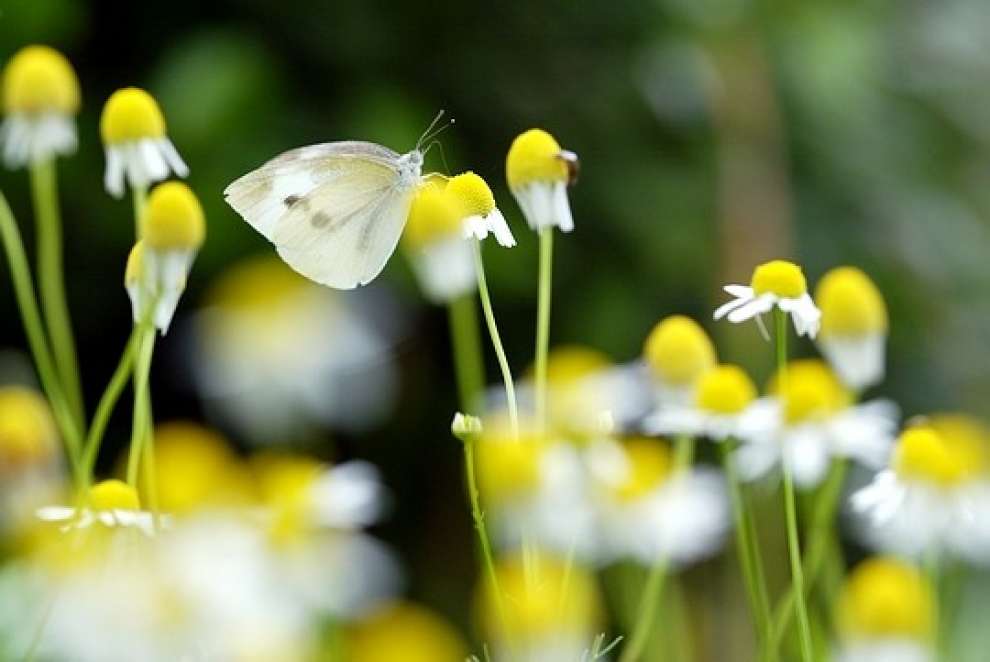
Chamomile has been used since ancient times. One of the first people to signal its beneficial properties was the ancient Greek doctor Hippocrates (460-370 B.C), the Father of medicine. It has also been named as the "plant doctor" because it heals the sickly plants around it, heals animals that eat it and mainly heals us when we need a mild natural analgesic.

The origin of the name Chamomile came from the Ancient Greek words "Chamai" = above the ground, a word incidentally, that is still used in the Cypriot dialect and "milo"= apple because the ancients said that it smells like an apple. There are two main varieties of Chamomile: the German chamomile (Matricaria recutita) and Roman (Chamaemelum nobile). Cyprus has its own "mougiochorto".
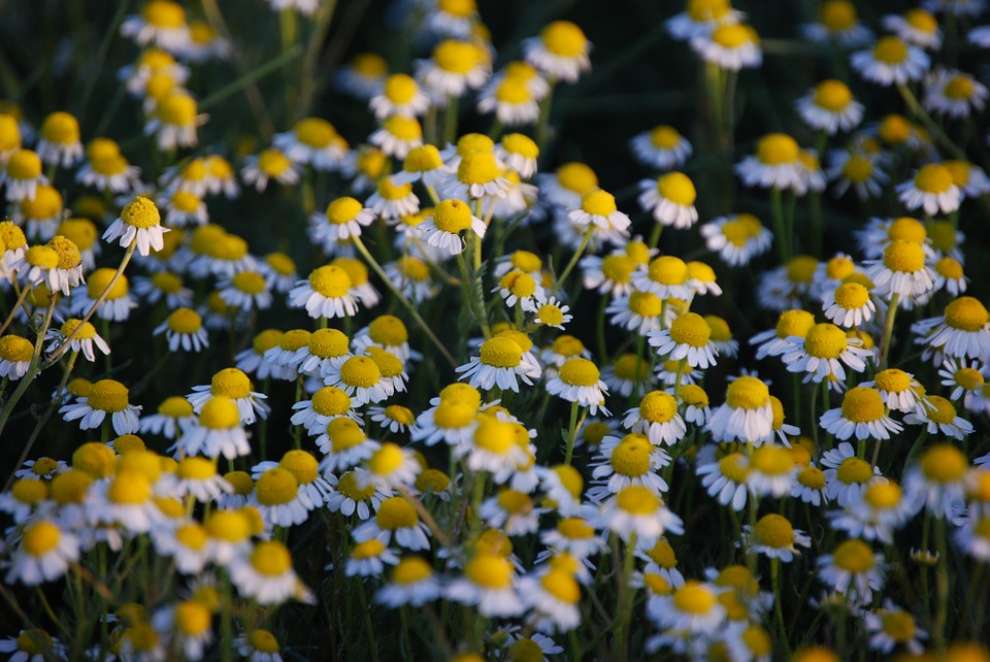
When I was little child I would always confuse the daisy with chamomile because they look very much alike. You may find yourself in a field where they are mixed up together and you will find yourself not knowing what you are collecting. The major difference is that chamomile has a strong smell and the daisy is odourless. Also the daisy has longer petals than does chamomile.
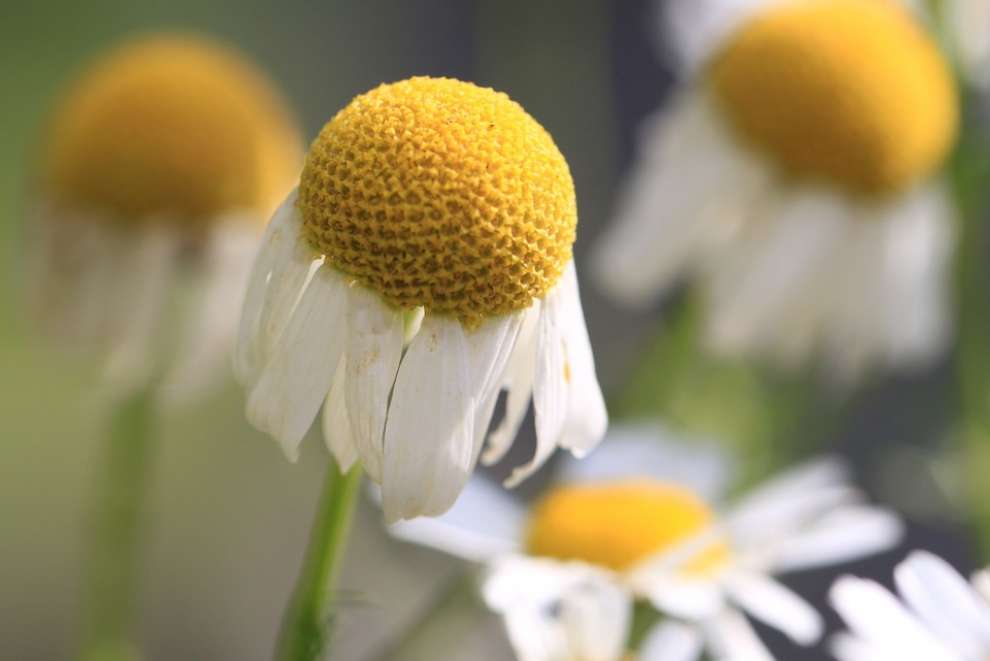
You can cut it with your own hands because it is fairly small, but if you gather it with comb-like tools the picking becomes as easy as pie.
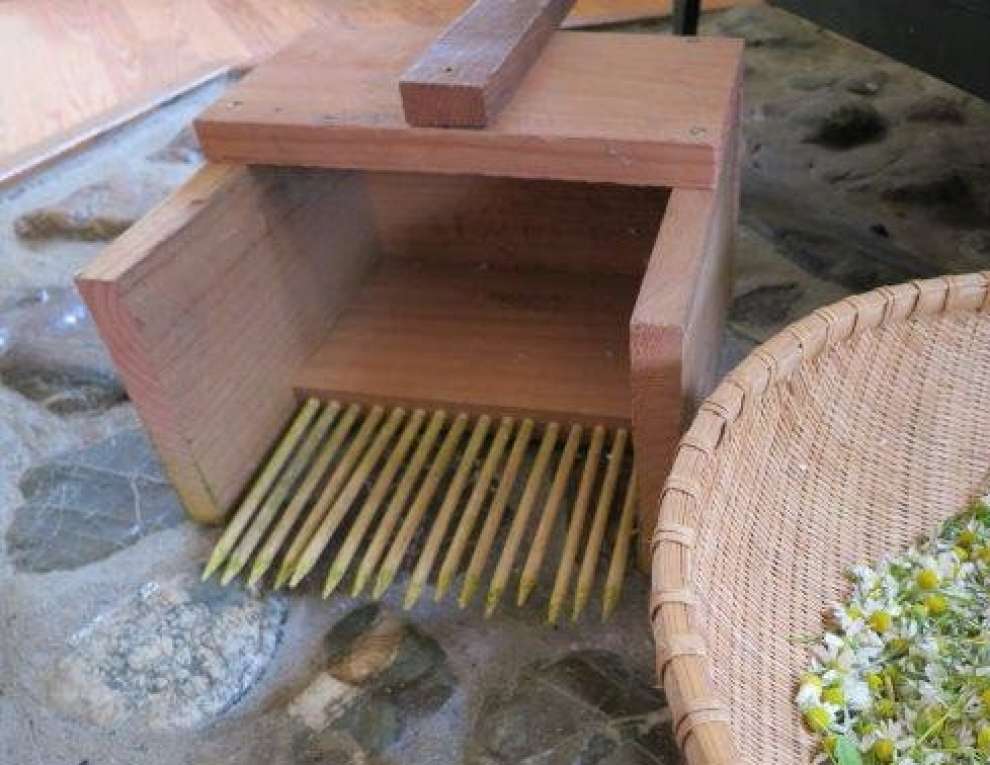
It blossoms from April to June. We should only collect the well more mature flowers, preferably in the morning and before they start to lose their petals because then the quality is destroyed and while it is crusting the colour is getting darker. If you use the entire plant, hang it upside down in a dry place. You should never wash Chamomile! When you have collected your chamomile, as with all herbs, store it in a dark place at below 35C. in large tightly closed glass jars. The room should be dry and well ventilated. The use of metal and plastic containers is not recommended because theses can contaminate the herbs. Preventively add a few grains of rice into the jars, to absorb any excess moisture.
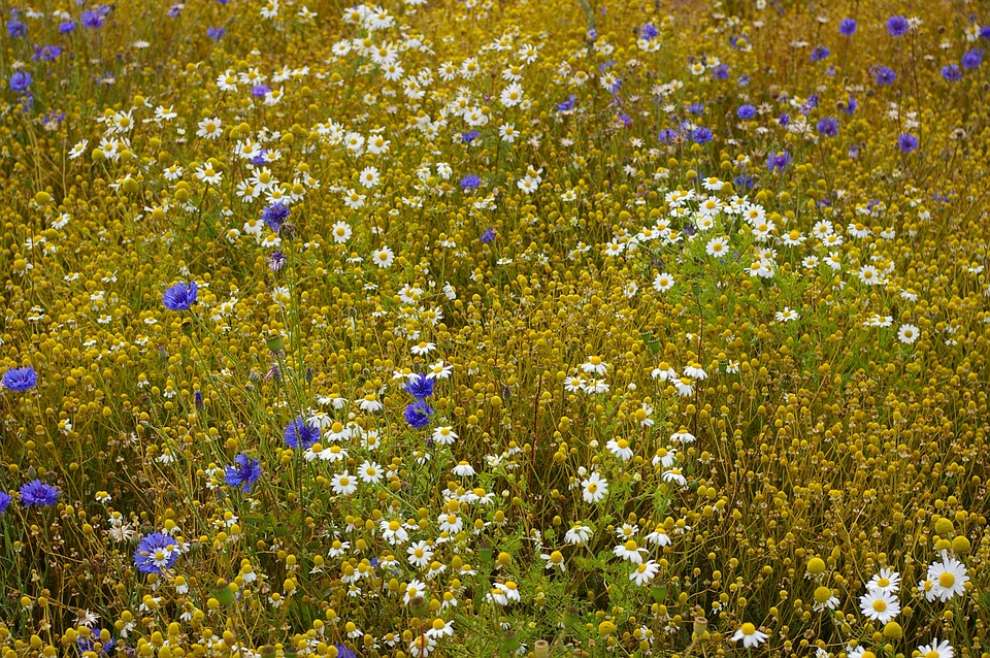
Taken in moderate quantities, Chamomile can help with cold, stress, flu, nerves, dyspepsia, migraine, neuralgia, dizziness, stomach aches, rheumatism, stress, menstrual pain, urinary infection, insomnia, ulcerations and pains in the intestines. It helps young children to sleep. It is a diuretic, and relaxes the whole body. A cup of chamomile in the evening is always conducive to a peaceful sleep. It is said to control diabetes. It increases the appetite of anorexics. It is beneficial for hyperactive and restless children. It helps prevents cancer. It stimulates the immune system. Treat skin problems with Chamomille compresses. Chamomile decoction can relieve us from bloating and annoying gases. It is useful in alleviating gingivitis (and thrush) and can be used as an eye wash to soothe sore eyes. Improves dark circles and eye puffiness. If you encounter problems in the eyes, use bags with chamomile, which you dip in hot water and place on closed eyelids (or do the same by dipping a cotton ball in chamomile decoction). Dark circles are reduced. It helps to heal burns and pimples. It relieves rash, itching, toothache, coughs, colds, flatulence, hemorrhoids, cramps, pain in the ears and mouth sores. Chamomile contains potassium, magnesium, calcium.
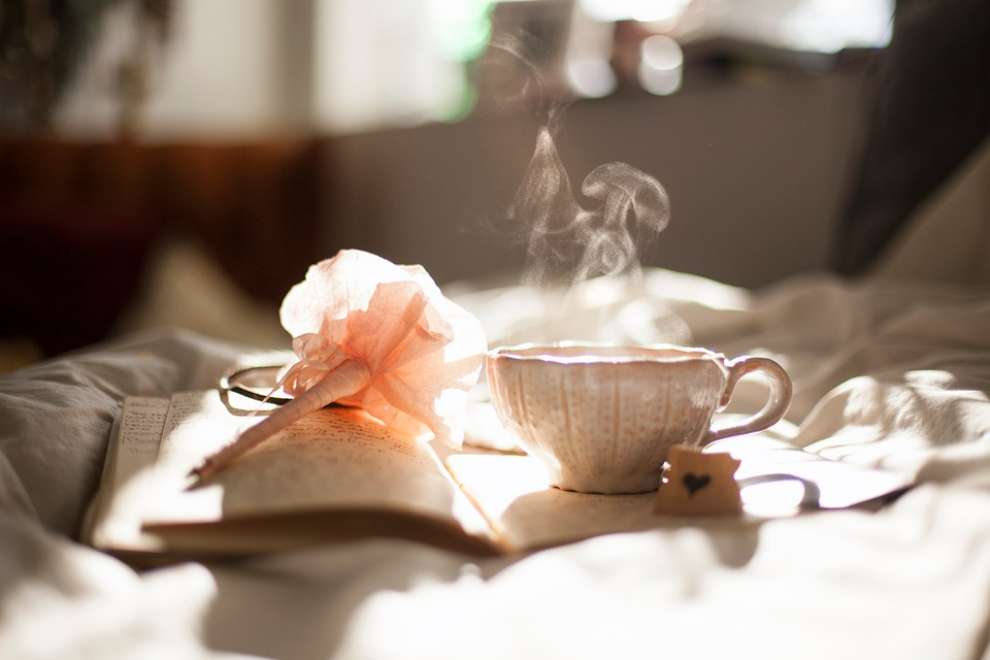
Who should avoid it:
Consuming large amounts of Chamomile is known to cause digestive or gastrointestinal irritation. Taking more than the recommended dosage of Chamomile, which is limited to 3-4 times a day, can cause diarrhea, vomiting and nausea. A Study at the University of Maryland Medical Center suggests that children under 18 should not consume more than half of the adult dose each day. Children 5 years and under should not consume more than half a cup of Chamomile tea a day. Chamomile accumulates in the body, so that if there are side effects they can occur, after several days.

Pregnant women can use chamomile to relieve morning sickness, nausea and vomiting, but it should not be consumed in large quantities it can then bring about uterine contractions.

Note that people who are allergic to daisies and chrysanthemums, may be allergic to chamomile and for this reason should avoid it. Cases have been known of intense allergic reactions to drinking chamomile.
People with asthma should take Chamomile with caution as should people with iron deficiency. It can affect iron absorption from the gut. Because it is itself a sedative, it should not be taken by people on sedative medication such as antidepressants and hypnotics.
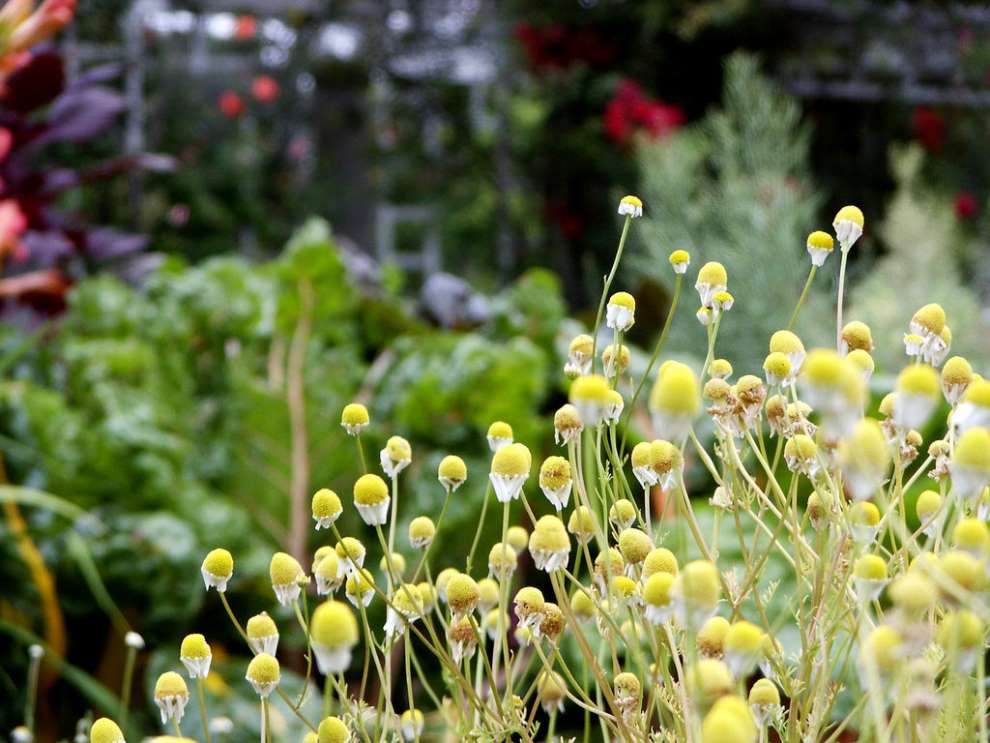
Decoction: For each cup pour a teaspoon of herb. Cover and leave to boil for 10-15 minutes. Strain and drink. You can if you wish add some sugar or honey according to your taste
Compresses with chamomile decoction: Leave them for 10 minutes, in order to alleviate any type of skin problem.
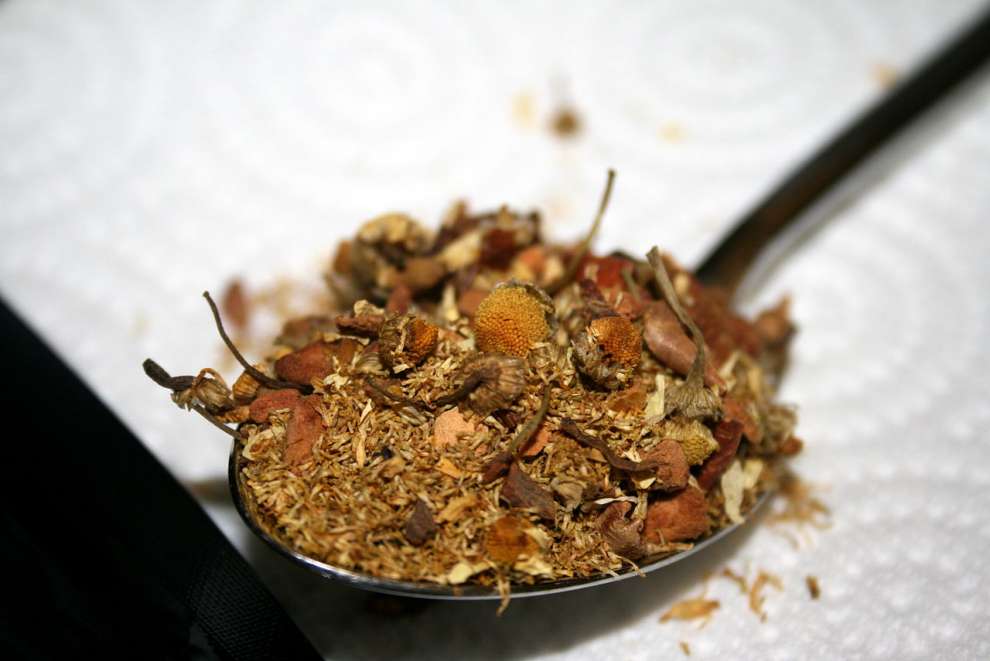
There are a few practical tricks to obtaining the most benefit from a chamomile beverage. . Using honey instead of sugar or mint enhances the properties of herbs and multiplies the biological value of our herbal teas. The water temperature should not be above 70C degrees, because the vitamins found in tea and honey get destroyed above that temperature. The most correct way is to drink the beverages in a heavy thick porcelain mug. This causes it to keep warm for much longer.
Dosage - For adults:
• Tea - One cup of boiling water to about 2-4 grams of the dried herb. Leave for 10-15 minutes. Drink 3-4 times a day between meals.
• Gargling - mouthwash. Brew the tea and let it cool. Gargle as often as you wish. You also get 10 to 15 drops of liquid extract in 100ml hot water and use three times daily.
• Swollen eyes. Be sure to always store waste frozen bags with chamomile. Leave at room temperature for 3 minutes and then tap on the closed eyelids. The tannin of chamomile reduces swelling.
• Compresses with chamomile decoction. Leave for 10 minutes, on the skin in order to alleviate any type skin problem.
• For irritated face. Boil 1 tablespoon of chamomile flowers in 150 ml water. Remove from the heat and leave for 15 minutes to cool a little bit down before straining. Add 2 drops of lavender essential oil. Use this mixture as a compress to the face to soothe irritated skin. (But beware, not on the eyes.)
• For daily drink. Calms the body and is particularly soothing and digestive for the stomach. Treats stress and insomnia (in this case, it is good to drink a little before bedtime).
•For the bathroom. Boil 1 litre of water with a full handful of chamomile, remove from the heat and let stand for 15 minutes. Then strain and pour the concoction in the bathtub, which would after filling with water. Immerse your body in the water and relax. The bath will relax you and calm your stress while soothing any possible skin irritations.
• To remove makeup. Mix 2 tablespoons fresh milk with 2 tablespoons of chamomile decoction. Put a small amount of the mixture on a cotton ball and remove the makeup. As soon as you are done with the cleaning, wash the face with water.
• For hair. It used to be very popular have the rinse of hair after shampooing with water in which you have previously boiled chamomile, to acquire open hair tints and luster.
• Cosmetics. Chamomile is used for its beneficial softening and soothing properties on the skin, especially in cleaning, cleansing, and moisturizing.
Recipe for chamomile oil
Fill a glass jar almost to the top with fresh / chloro chamomile. Add olive oil so as to cover up all of chamomile flowers. Seal the jar and leave it in the sun for about 1.5 months (or 3 in the shade). After the selected time, pour the mixture, straining it with a French coffee filter (or 2/1 napkins) in a sterilized glass bottle. It can be kept up to 1 year in a cool place.
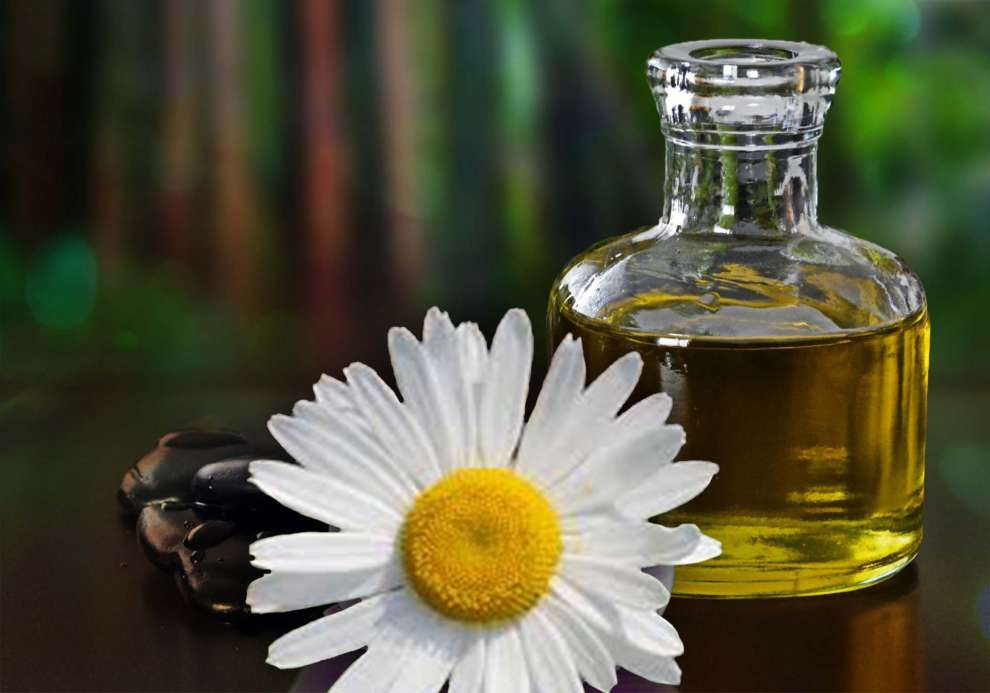
Chamomile in a pot
Chamomile (Matricaria recutita) is one of the most beautiful aromatic plants of Greek land. It grows everywhere by itself so you are sure to be able to grow it in pots if you sow a little seed. It is one of the Mediterranean plants that do not require much water but it definitely needs sunlight to grow. It requires light soil, such as sandy loam. Is best planted in autumn. If all goes well, in the spring you will be able enjoy the beautiful flowers in pots, and of course to collect your own chamomile.
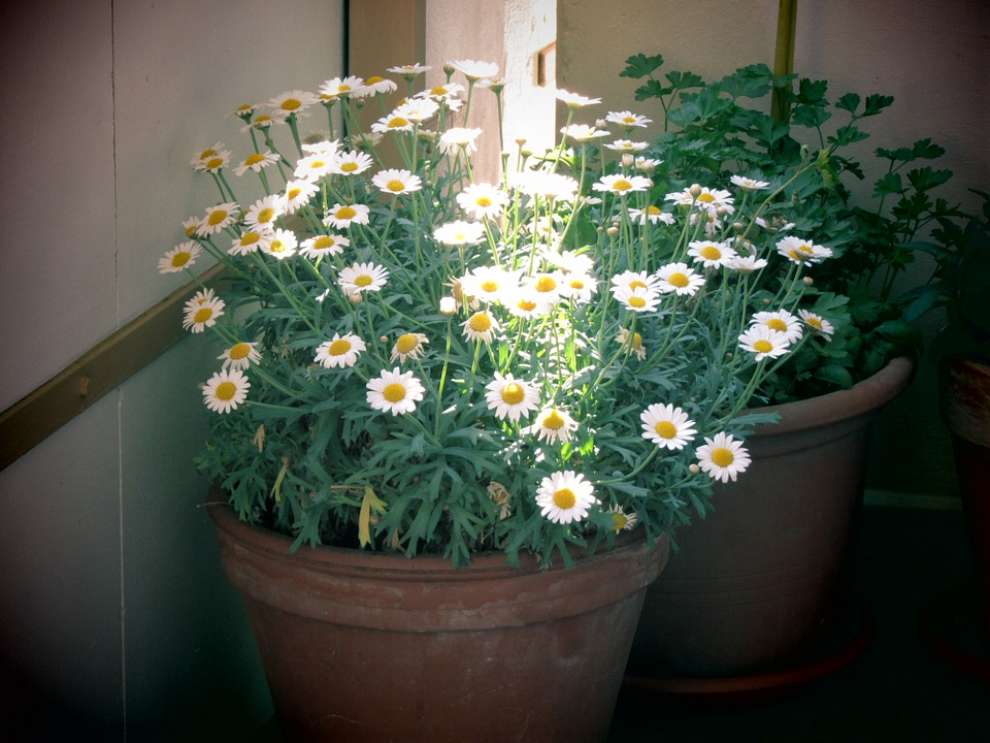
Caution: if you use a chamomile eye wash do filter the infusion, so that no pollen or dust grains come through, because they could make the problem worse. Chamomile should not be used for prolonged periods during pregnancy.
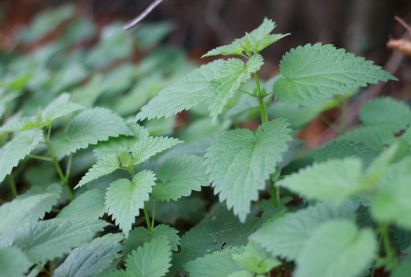
Learning about herbs? Read about stinging nettle herb benefits.

 English
English
 Ελληνικά
Ελληνικά Русский
Русский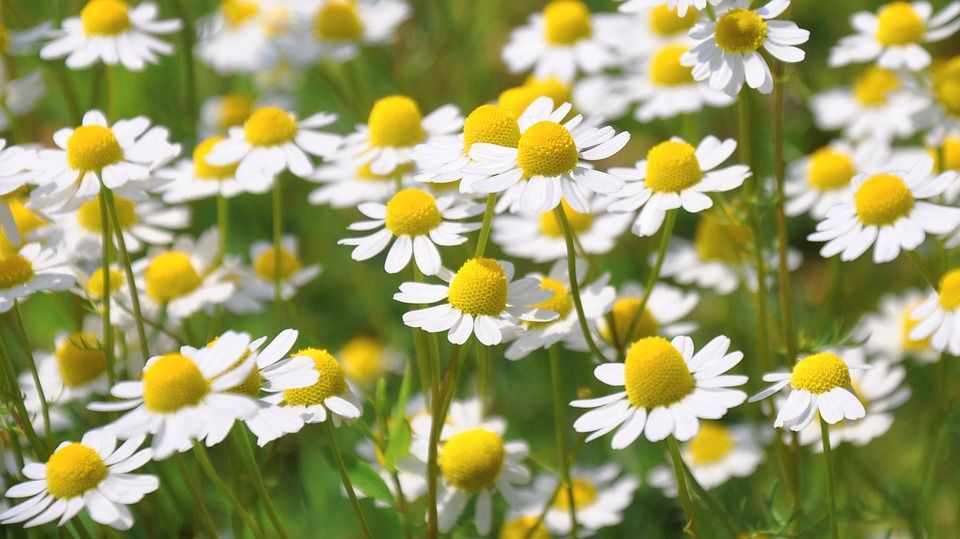
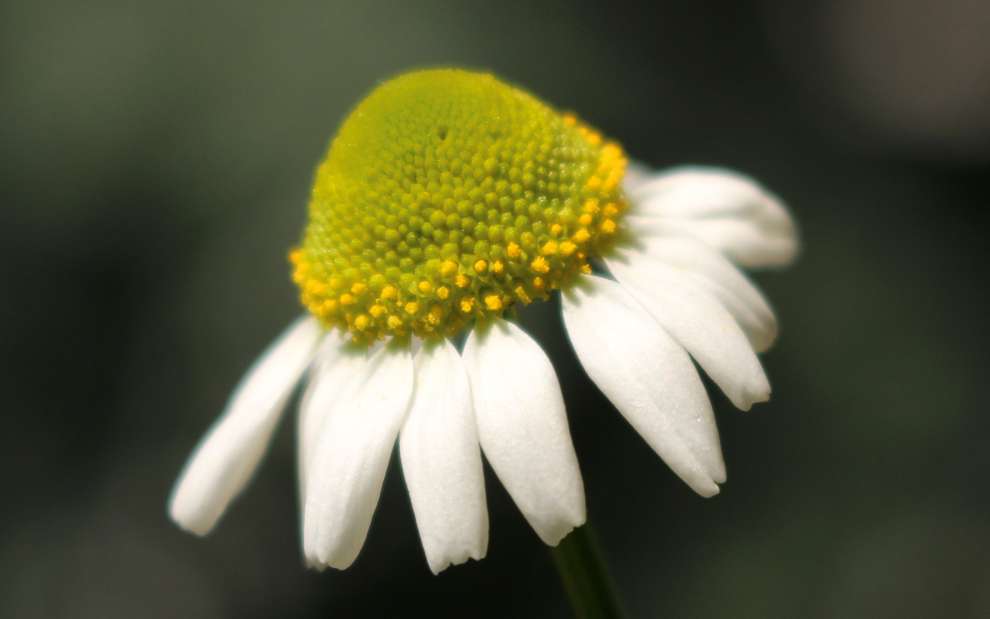
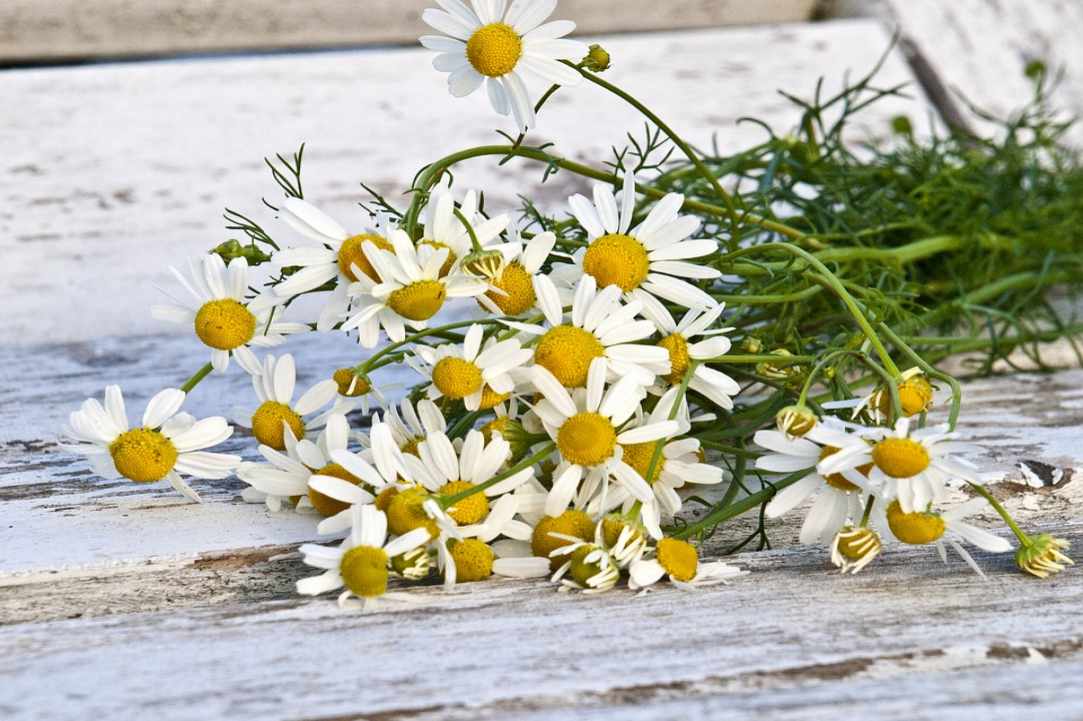


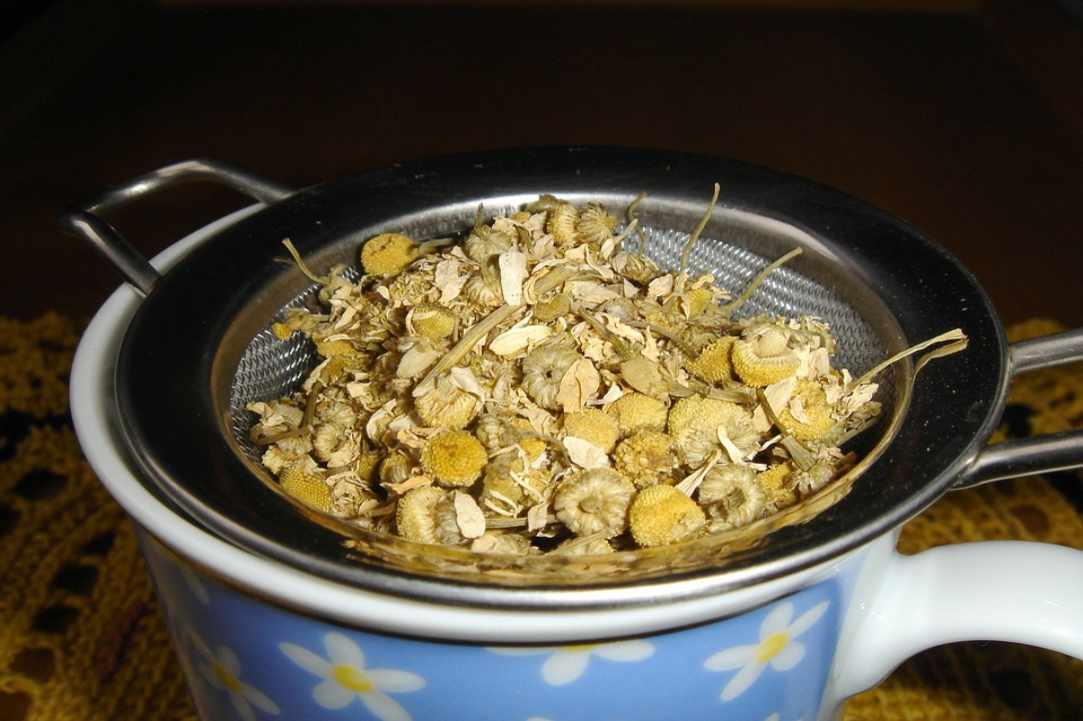
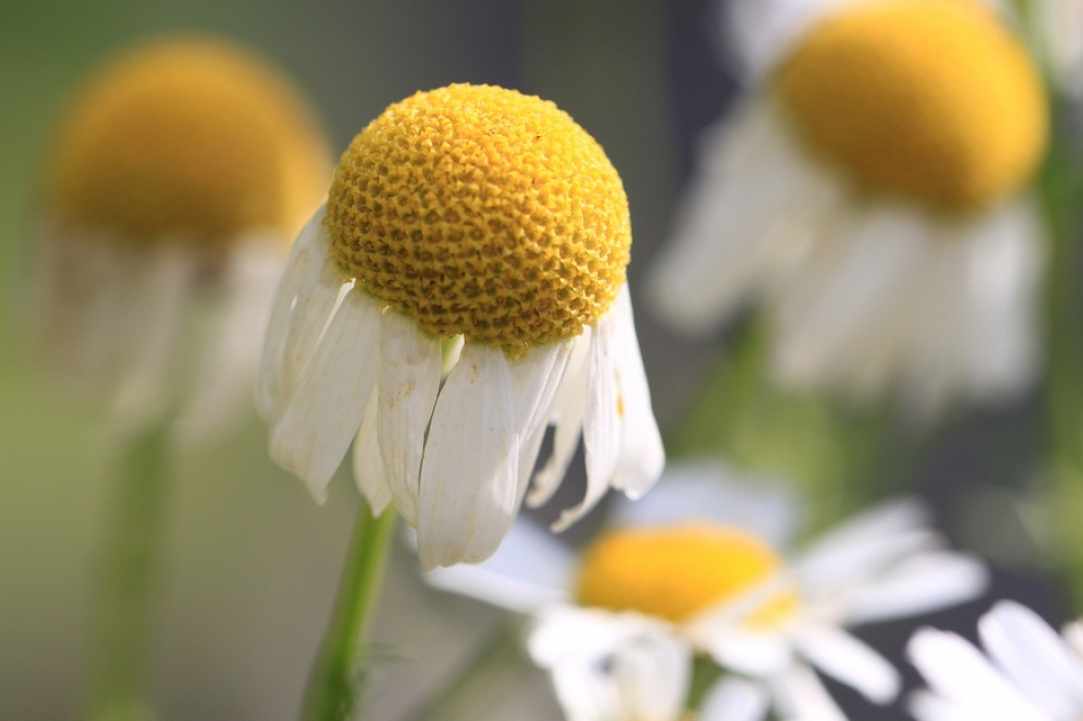
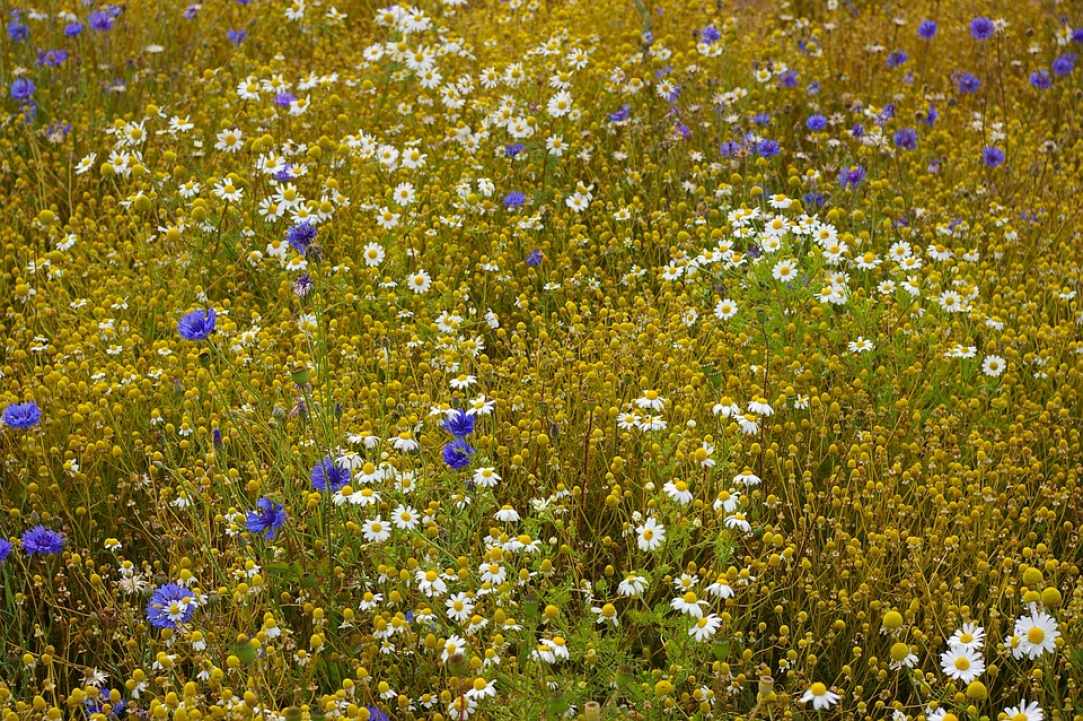
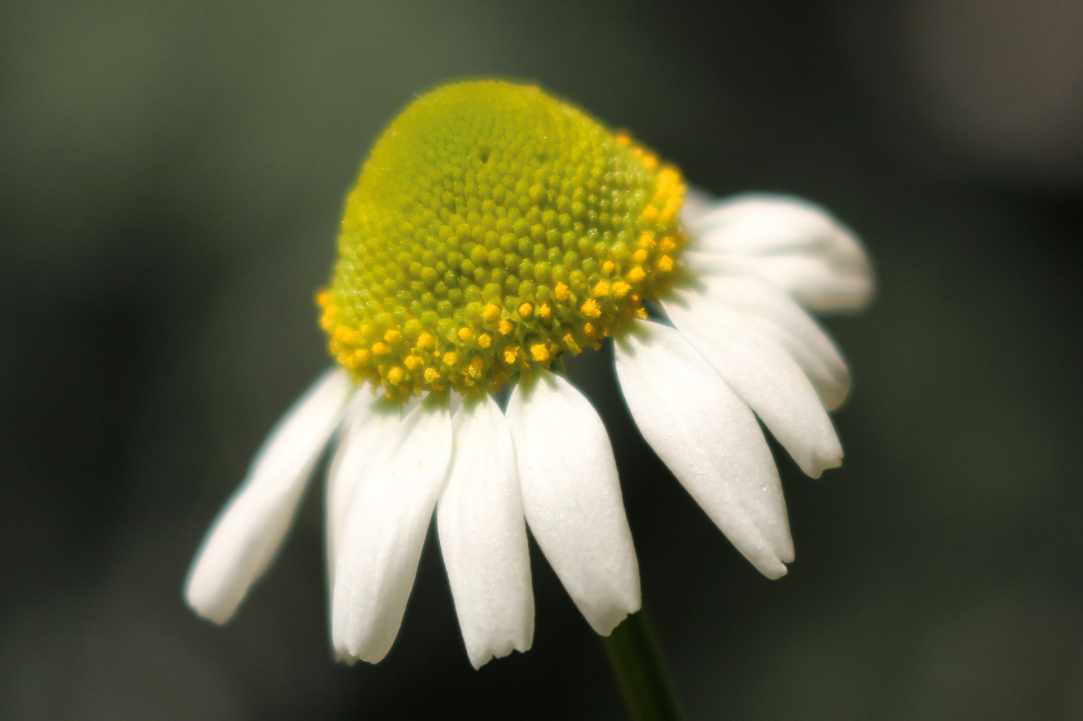
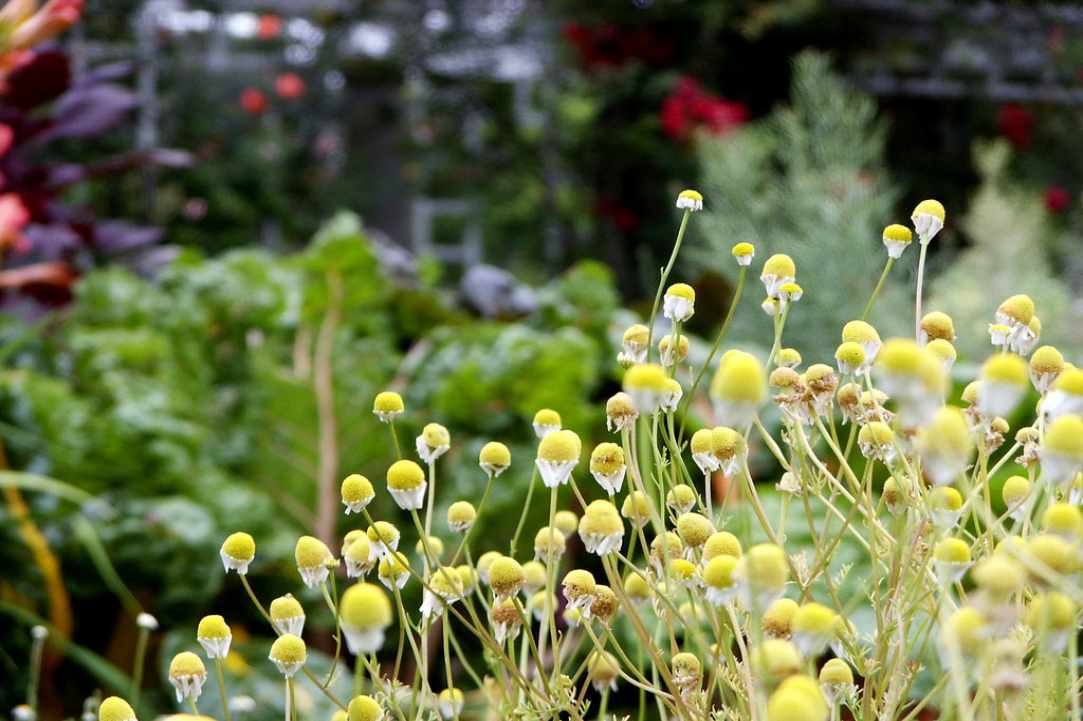
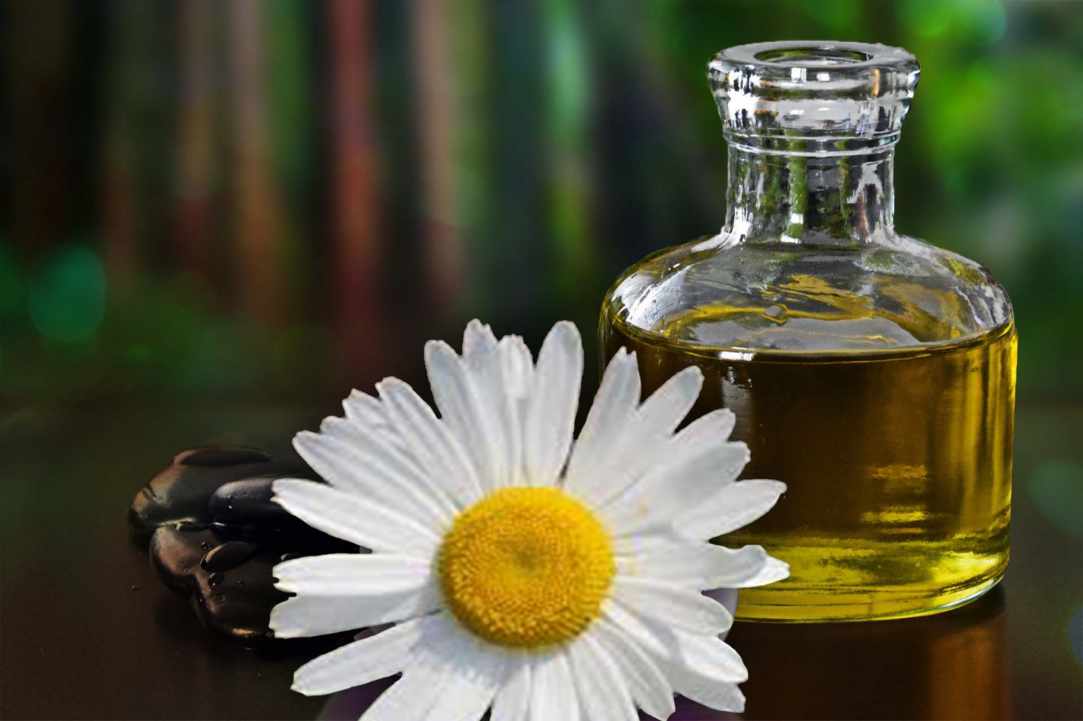

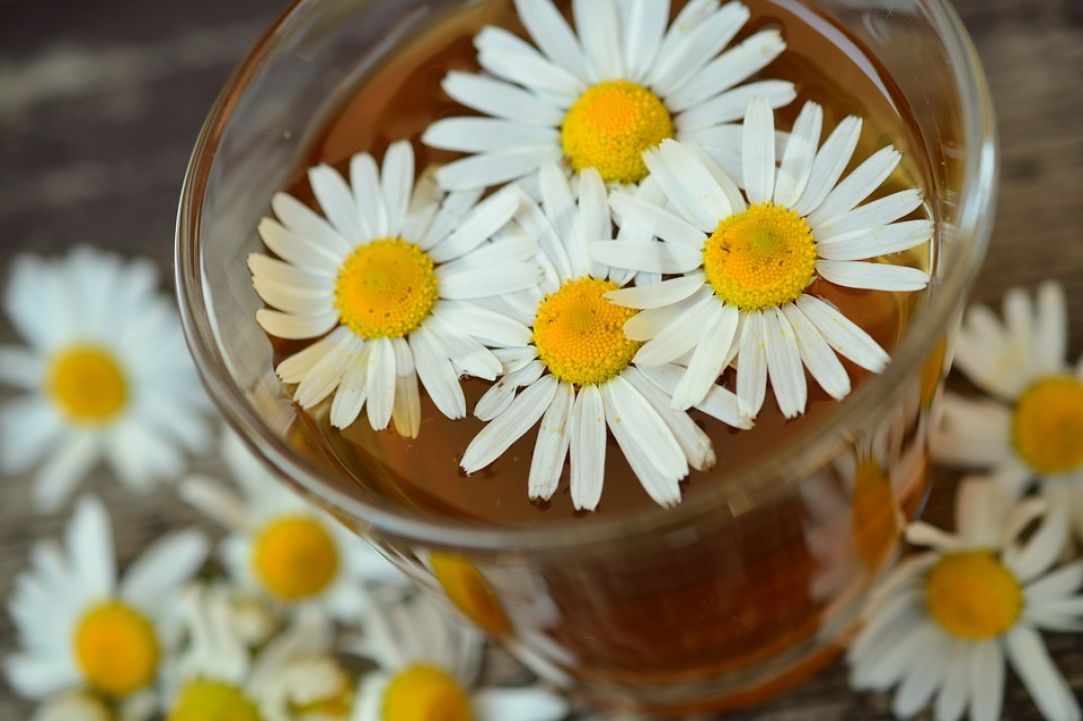
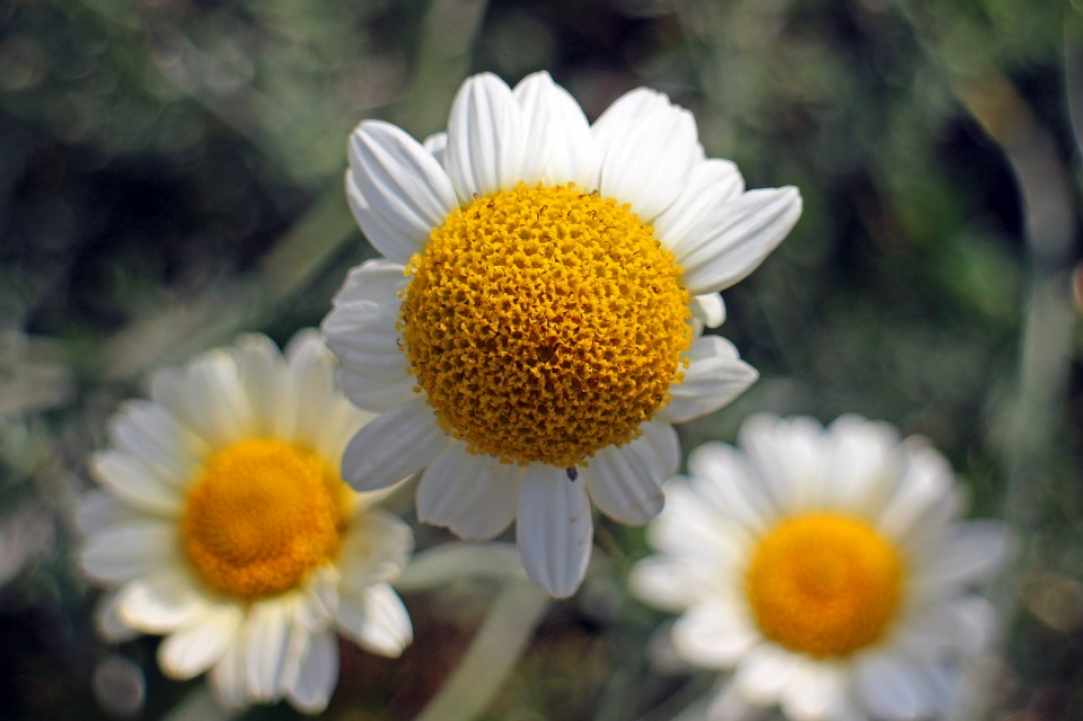
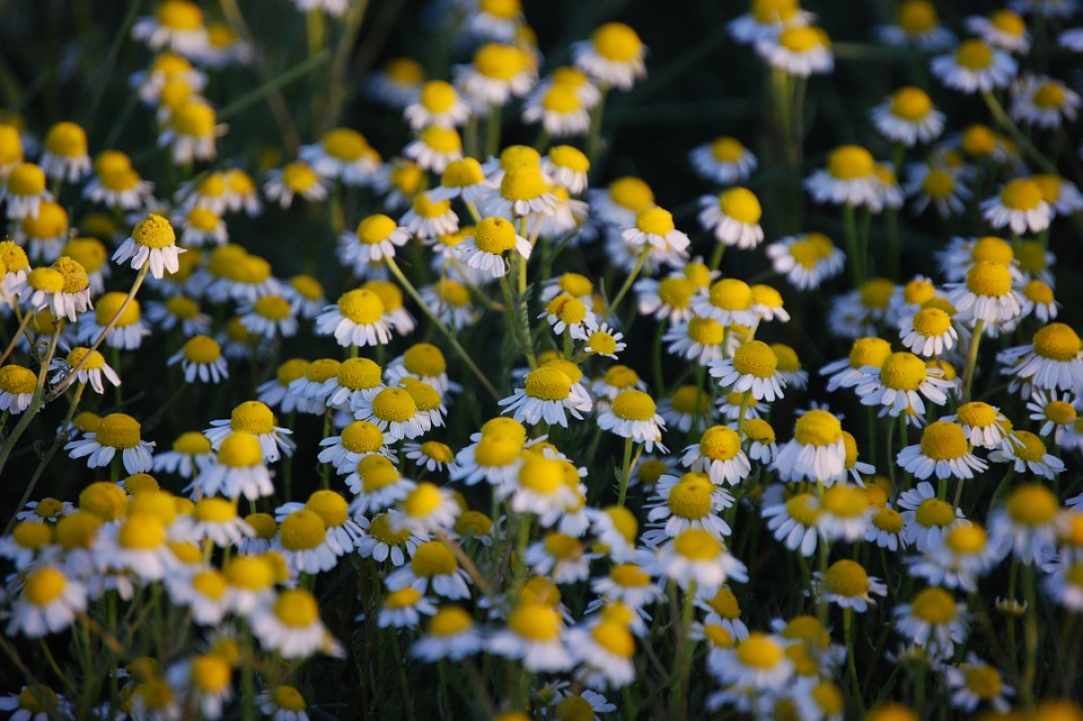
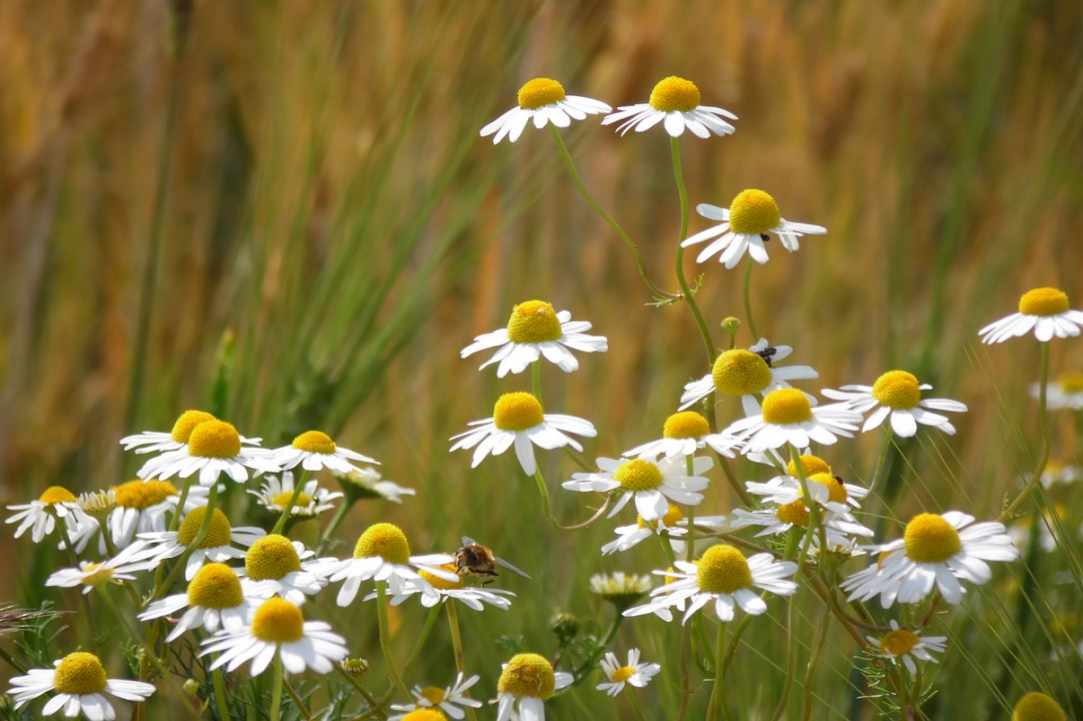
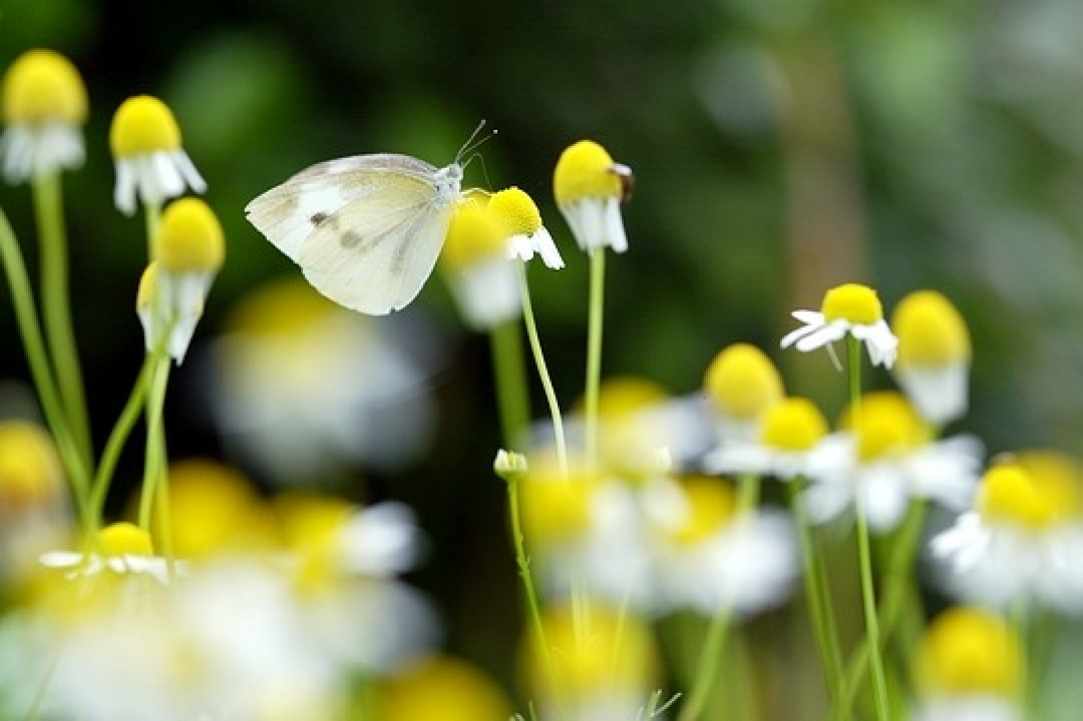
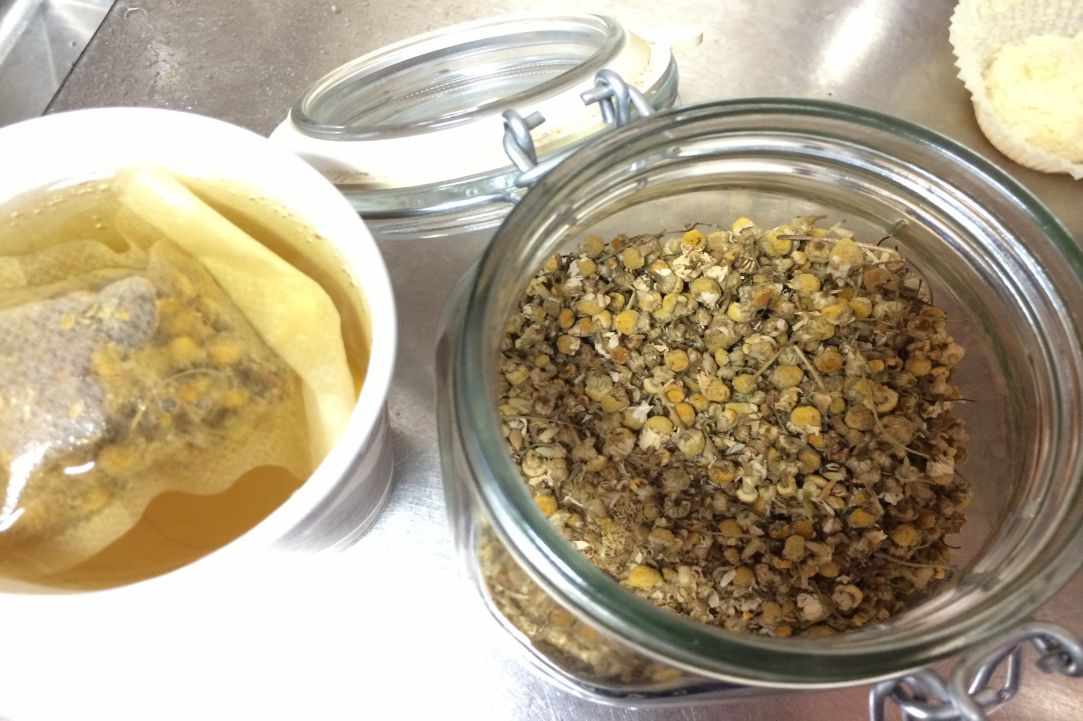
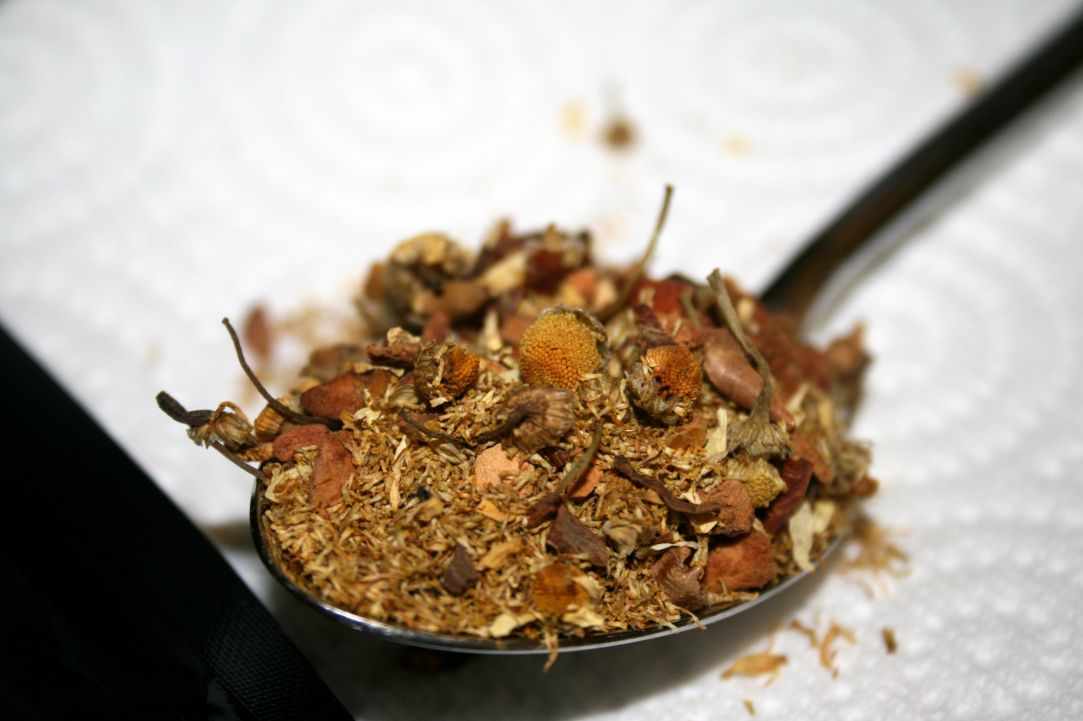


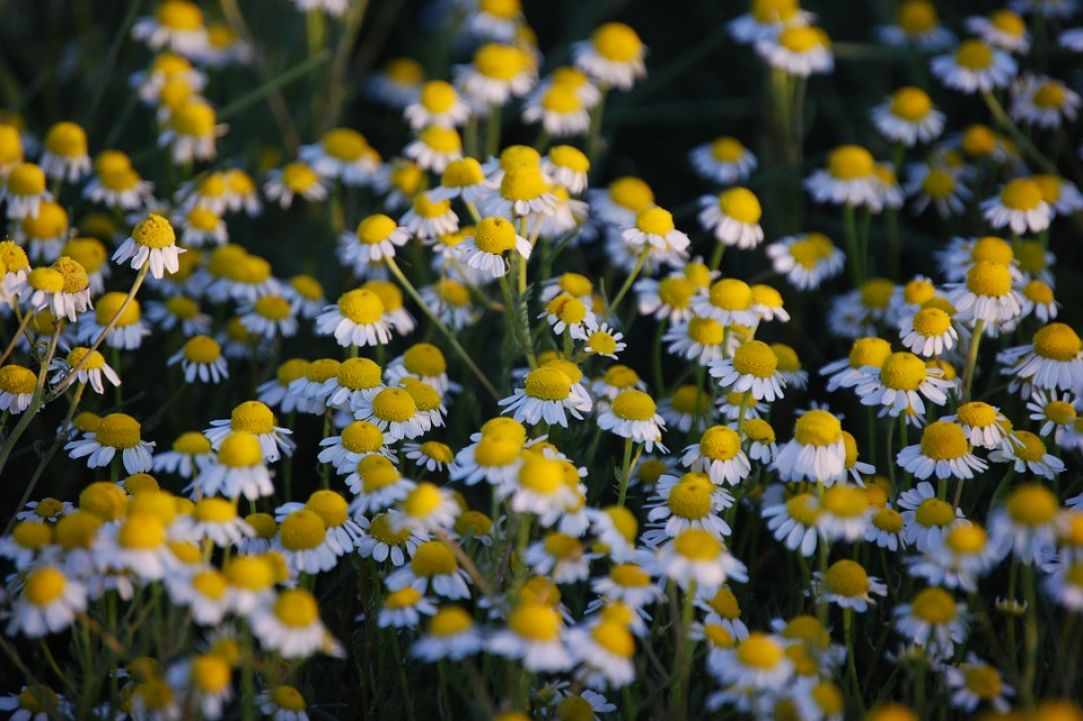
 Posted by
Christina Nicolaou
Posted by
Christina Nicolaou






